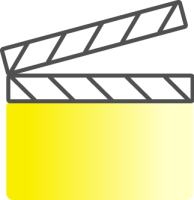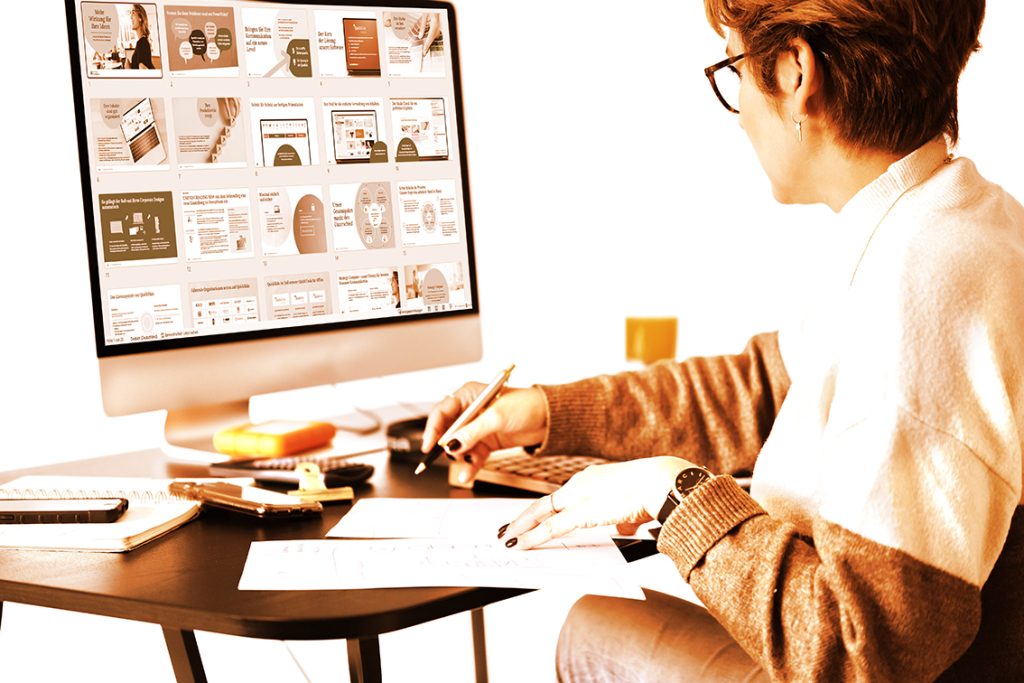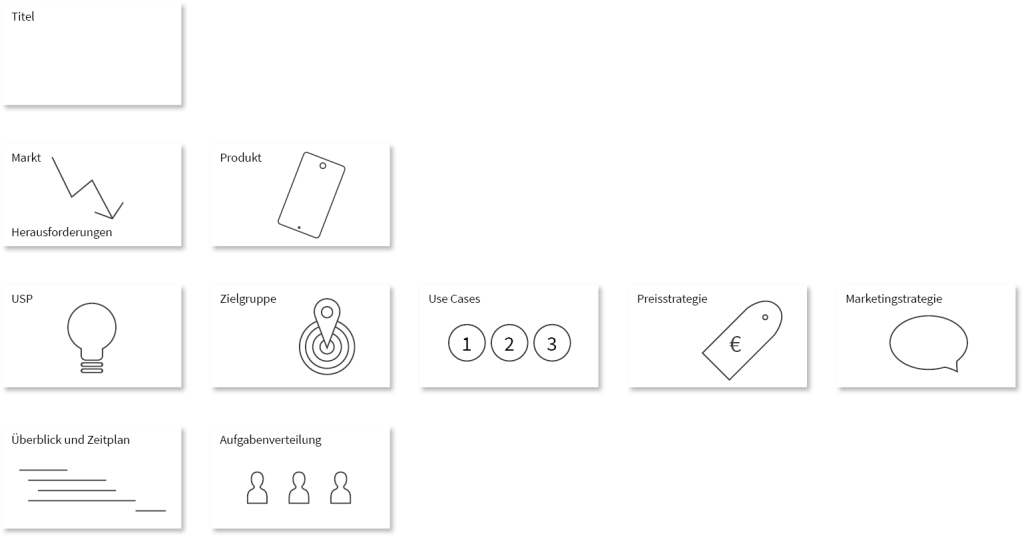How storyboards help you with presentation creation
Hollywood shows us how: improve how you plan the flow and content of your presentations.
What do a successful presentation and a blockbuster movie have in common? Both of them grab their audience’s attention right from the start and keep them in suspense with a story which sticks in their minds. Storyboards are first set up to provide a clear structure for a movie’s storyline. You can apply the same principle for creating presentations.
What’s a storyboard?

The concept of storyboards stems from the movie industry. A storyboard sets out the plot and scenes from a screenplay primarily through images. Frame by frame, a visual plan is set up to outline the ideas and plot for the movie. Depending on the level of detail included the storyboard can also provide information on motion sequences and visual settings. The storyboard conveys the first visual impression of the movie and a common understanding of the project. It is therefore a key element of structured planning for a project’s process. A storyboard can also be used to test complex plots to see how they can play out. For instance, does the narrative structure work? Which scenes are essential and which are just nice to have? Do we need to add further explanatory elements, scenes or dialogue? Important decisions can be made based on a run through of a storyboard and priorities can be set which also have an impact on budget planning.
How can I apply storyboards to presentation creation?
If you create a presentation, you’re faced with very similar challenges to those of a movie production team. You want to create an impact with your presentation, for instance, inform your audience, convince them of something or influence their decision-making. You therefore need a decent plan and clear structure for your points. Creating a storyboard can help you organize your train of thought. It can also help alleviate the classic mistakes when creating presentations, namely setting it up slide by slide and investing tons of time in details and fine-tuning before there’s even a rough outline for the best structure for conveying your points and core messages.
What are the advantages of working with storyboards?
How can I get started with storyboards?

When creating a storyboard for a presentation it can help to follow these three steps:
1. Know your audience and objectives
Before you even start on a storyboard you should be able to clearly define who the presentation is for, what you want to achieve with the presentation and what impact you want it to have on your audience. Do you want to impart knowledge or information? Do you need their buy-in for a project? Do you want to encourage them to make a purchasing decision or take some other action?
2. Begin creating a storyboard
To start with, just grab a piece of paper. Sketch out 10 fields in slide format. In the top-right of each field note down the section of the presentation to which that slide will belong. For instance:
Slide 1: Title slide
Slides 2-3: Introduction
Slides 4-8: Main body
Slides 9-10: Conclusion
Now use this plan to define keywords for your presentation’s content. This visual approach helps you to maintain focus. Note down or sketch ideas for images or graphic elements at this stage, too.
You can proceed like this:
- Write down the topic of your presentation on the title slide you’ve sketched out. This doesn’t have to be a proper headline at this stage.
- Consider how you want to introduce and reveal this topic by noting down some ideas where you’ve sketched out slides two and three.
- Think about the information your target audience needs to know. Remember: The most important points should come first, the content should be structured logically with one key point or idea per slide. Use slides four to eight to jot down these points.
- Now you’ve reached the concluding slides. Consider what you want to achieve and the impact you want to have on your audience. The final two slides should be dedicated to these objectives. If, for instance, a decision should be made at the end, then formulate this on these slides as rough bullet points.
- You can find valuable tips for presentation creation in our blog post How to structure a presentation.
Our tip: You can of course use a presentation application like PowerPoint to create a storyboard. The main thing is that at this stage you don’t invest any real effort into designing or formatting slides and instead use the storyboard simply as a way to help structure your concept and content.
3. Test your presentation structure
Perform a critical review of the storyboard for your presentation and ask yourself the following questions: Is there a common thread running through your whole presentation from start to finish? Have you included all key points? Is there any content you can omit so as not to overwhelm your audience? Will your introduction gain your audience’s attention right from the beginning? Does the main body of the presentation guide your audience appropriately to the conclusion? What can be improved to make your presentation more relevant or effective? Consider asking colleagues or even a few sample people from your target group to provide feedback on the storyboard. At this stage you can make as many changes as you want without too much effort.
Only start on presentation creation when you’re really satisfied with your storyboard. Of course, your final presentation can include more than 10 slides. However, the three sections, introduction, main body and conclusion and how these sections relate to each other should not be altered.
What does a storyboard look like? Are there examples?
To show how a storyboard can be set up, here’s an example of one for a presentation to inform colleagues internally about the launch of a new product.
Title slide: Launch of product xy
Introduction:
Slide 2: Market demand: Challenges addressed by the new product.
Slide 3: Brief introduction of the product and what it’s for/what it does
Main body:
Slide 4: Product description: Functions and attributes of the product (USP)
Slide 5: Target audience: Who will benefit from the product and its features
Slide 6: Application scenarios: Use cases and benefits provided by the product
Slide 7: Pricing strategy: How the product will be positioned in comparison to competitors
Slide 8: Marketing strategy: the messages and channels to be used to market the product
Conclusion:
Slide 9: Summary of key points and timeline
Slide 10: Task distribution, who’s responsible for what, who needs which information, etc.

How can predefined storyboards facilitate presentation creation for businesses?
Companies who want to support their employees long term in presentation creation tend to work with predefined storyboards. Recurring presentations can then be created much more quickly and easily.
Employees don’t need to think how they should structure their presentations. The predefined storyboards already lay out the content sequence and structure for them. So everyone can be spared the effort of having to start presentations completely from scratch and instead use the storyboard as a springboard and template for their new content.
The benefits are clear. Presentations are generally better structured and focused and errors and inconsistencies are avoided. Internal target groups such as managers can define their content requirements for presentations with storyboards. Consistent presentation standards can be established for a company using storyboards. Storyboards also encourage collaboration between colleagues as they form a common basis for defining and developing presentations. All employees work on the same basis and can therefore integrate their contributions more effectively.
We support our customers with the development and company-wide introduction of storyboards. If you’d like to know more, just get in touch with us!